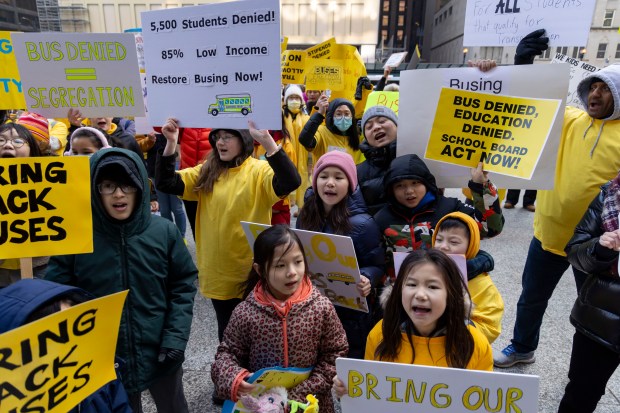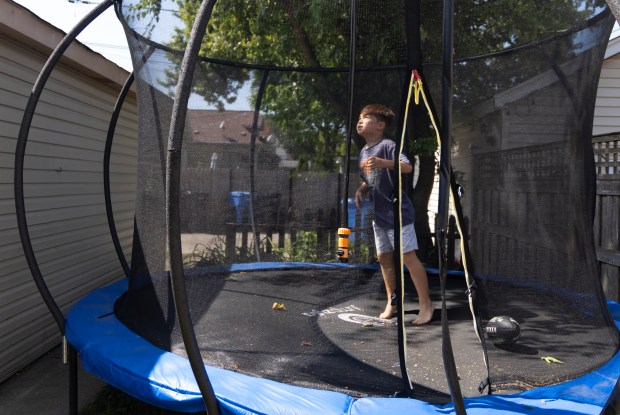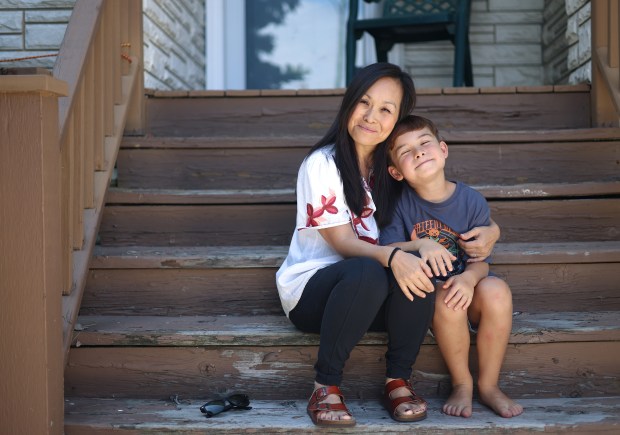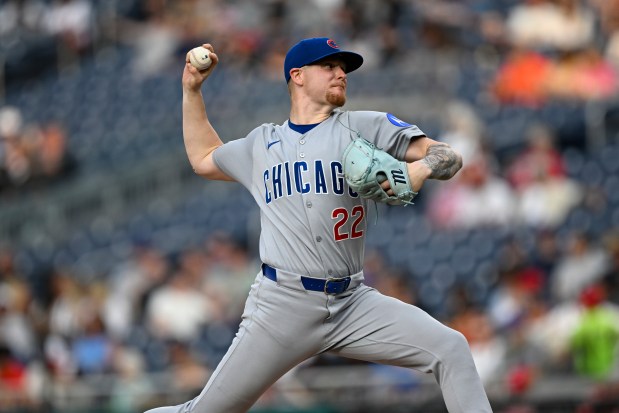Every school day last year, Marissa Lichwick-Glesne and her son took a bus and two trains to make the 21-mile commute from their home in Norwood Park to Ted Lenart Regional Gifted Center in Chatham on the South Side.
Since busing was not provided for selective enrollment CPS students last year, the two-hour commute each way on public transit was the best option for Lichwick-Glesne, who has epilepsy and cannot drive her 7-year-old son Laike to school. Midway through the school year, a carpool relieved some of the stress.
But, a year later, Lichwick-Glesne’s family found themselves in the same position. Still not guaranteed busing for this school year, the family was scared to repeat the same routine. After spending months on the waitlists of selective schools closer to home, Laike is switching to a new school this year, Beaubien Elementary School’s Regional Gifted Center in Jefferson Park, just a 12-minute CTA bus ride or 10-minute drive from home.
Despite a new plan from Chicago Public Schools promising to boost transportation services for qualifying students, students at selective enrollment and magnet schools will not be guaranteed busing again this year, leaving Lickwick-Glesne and throngs of other parents searching for transportation solutions to get their children to and from selective enrollment and magnet schools which draw students from every area of the city.
The district historically has provided transportation for students at selective enrollment and magnet schools. However, its policy is to prioritize the busing of diverse learners and students in temporary housing.
Over the past several years, the district has struggled to provide busing for all students who qualify amid an ongoing bus driver shortage. Last school year, CPS said it could not provide busing for general education students at selective enrollment and magnet schools.
CPS estimates that about 5,500 students at magnet and selective enrollment schools are waiting on busing but not receiving it this year, according to a statement from the district in July.
Now, denied district-provided transportation for the second year in a row, some selective enrollment and magnet school families are switching schools, others are forming carpools, and many are just hoping for things to change.
“Everyone was like, we are going to retest (our) children, and we’re going to figure out a solution on our own, because we can’t wait for CPS to help us out,” Lichwick-Glesne said about her family and others she knew were in the same position. “But we were all playing a waitlist game because it is very competitive.”
CPS presented its most updated plan to deal with the ongoing bus driver shortage at a board meeting last month.
Again this year, CPS’s busing plan prioritizes transportation for students with disabilities — those for whom transportation needs are listed on their customized education plans, known as Individualized Education Plans or 504 plans — and students in temporary housing.
The district told the Tribune that all students qualifying for transportation this year will receive either direct transportation or a financial incentive, which amounts to $500 per child per month to offset transportation costs if they are not assigned a bus route by CPS or opt out of transportation services.
One key change is to implement staggered school start and end times at 36 schools, which could enable bus drivers to take on more routes in response to the growing number of students qualifying for transportation.
Like Lichwick-Glesne, Natasha Haque’s family decided the commute was too much. Haque is a founding member of CPS Parents for Buses, a local parent group that advocates for busing for magnet and selective enrollment students at CPS. Lichwick-Glesne also got involved with the group last year.
Haque’s older child, Aria, attended Keller Regional Gifted Center in Mount Greenwood, about 21 miles from their home in Lincoln Park. Last year Haque’s husband spent two to three hours driving her and their son to school each day.
Not wanting to continue the commute, they had their daughter retested, and she’ll be moving to Skinner North Classical School in River North for seventh grade this year.
In addition to staggered start times, CPS also announced its plan to pilot “hub stops” throughout the year. In this model, selective enrollment and magnet students can be picked up from a nearby CPS school and then bused to their choice school.

CPS does not plan to roll out hub stops until later in the year, meaning selective enrollment and magnet parents cannot count on them from day one. While the plan offers some hope for parent activists, some say they see little difference between the pilot program and the previous bus routing system for general education students.
“How is what you’re piloting a pilot program?” Lichwick-Glesne asked about the proposed plan. She said when her son did receive busing services, they dropped him off at the school nearest to them so he could be bussed from there. “It (CPS) just sounds like you’re introducing what you already did.”
Haque had tried to start a carpooling program last year but said there was “a lot more need than availability.”
Recent national data from school ride-service company HopSkipDrive suggests the effects of the bus driver shortage are ongoing. Its 2024 report said 79% of families nationwide are handling their children’s transportation on their own.
Carpooling provided some relief for parents at Decatur Classical School in West Ridge.
Last year, Decatur parent and school board volunteer Erin Tinsley took the lead, making a Google Form in the fall to send out to fellow parents to determine whose kids needed rides and from where. In the months that followed, she spent hours poring over her spreadsheet and trying to find matches using Google Maps — determining which parents lived in the same neighborhood, figuring out where other parents worked and whether their kids could be picked up there, and routing the roughly 65 families who needed transportation.
“There were some neighborhoods of people that there was just nobody available to drive, and so we didn’t make matches,” Tinsley said.
While Tinsley is collecting and fielding responses from her Google Form for a second year, other parents are sticking it out a little longer.
Erin Schubert, another CPS Parents for Buses member, plans to continue her daily three-hour commute to get her two kids to and from school. One attends Monroe Elementary, their neighborhood school, and the other attends Skinner North.
“I’m one of the lucky people who actually can do this,” Schubert said, whose work schedule and job teaching at a local university allows her some flexibility. “There’s parents, you know, working night shifts overnight at Walmart, they can get their kids in the morning driving (to) school, sleep a couple hours, and then get back up after sleeping for maybe four hours, pick them up from school, and then they go and work again.”

CPS will continue its program of providing Ventra cards to general education students at magnet and selective enrollment schools. As of August 8, the district says it had received 132 requests.
For those who will be receiving transportation, the district said it finalized bus routes and informed families on Aug. 16.
However, with the promise of hub stops and no guarantees from the district, selective enrollment parents, like those at CPS Parents for Buses, plan to keep organizing — even those who found a way out of their transportation troubles. They worry about what their kids will miss out on.
“CPS has talked about inclusivity, and how it wants to help maintain diversity,” Lichwick-Glesne said, pointing to the diverse school community of her son’s former school. “I think by the elimination of buses, it really does take away access, where kids that live in one area of the city do not get an opportunity to see other areas of the city.”
Tinsley said she fears the district’s busing problems indicate districtwide inefficiencies in transportation and funding for selective enrollment and magnet programs.
“We’re seeing the curtain of ‘The Wizard of Oz’ at this point,” Tinsley said. “They say, hey, we’ve got these great programs. Apply. Get in. You can come from all over the city. We’re really diverse. But then there’s no way to get there.”





